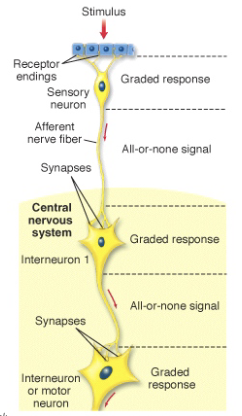9. The Action Potential Part 1
1/16
There's no tags or description
Looks like no tags are added yet.
Name | Mastery | Learn | Test | Matching | Spaced |
|---|
No study sessions yet.
17 Terms
What happens at each region of a neuron (input, relay, output)?
Input (dendrites + cell body)
Receives signals from presynaptic neurons
Produces graded responses (graded membrane potential changes)
Relay (axon)
Functions like a cable to transmit signals long or short distances
Propagates action potentials efficiently + reliably
Output (axon terminals)
Passes info to target cells (neuron, muscle, etc.)
Message can be electrical or chemical
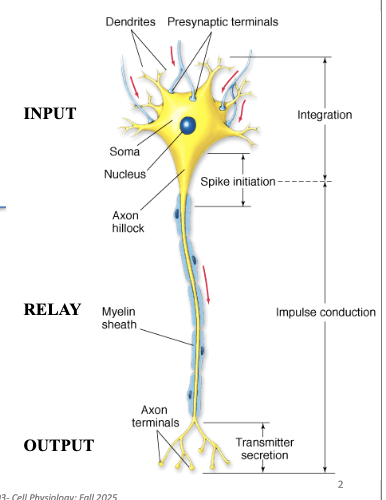
What are two major types of signals employed by neurons?
Graded potentials - in cell bodies
Action potentials - triggered by NET graded potential integrated at axon hillock
Why do action potentials appear the way they do?
Selective changes in membrane permeability will change membrane potential (excitable cells move ions more efficiently)
Why does sodium enter the cell and potassium leave the cell during an action potential?
Depolarization (rising phase)
Voltage-gated Na⁺ channels open → Na⁺ rushes in
Sodium enters because cell interior is negative vs. Na⁺ equilibrium (+58 mV)
Repolarization (falling phase)
Voltage-gated K⁺ channels open (slower) → K⁺ leaves
Potassium leaves because cell is more positive than K⁺ equilibrium (–81 mV)
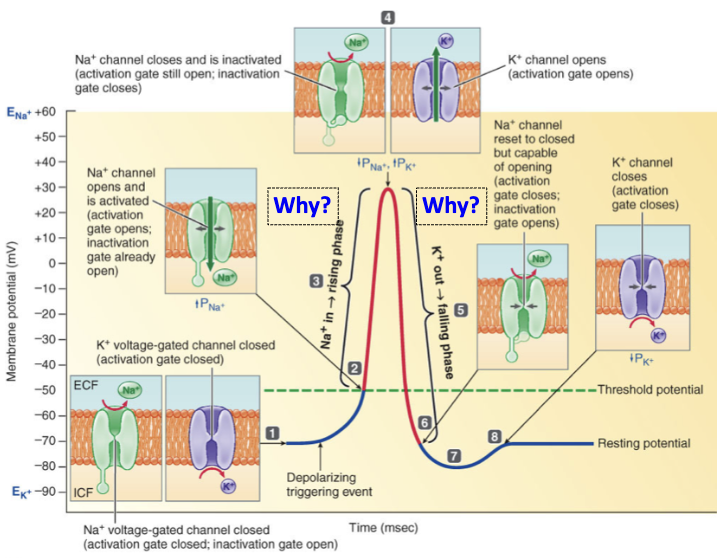
How do sodium and potassium move when their channels open?
Step-by-step:
Cell resting potential (Vm) = –68 mV
Sodium equilibrium (ENa) = +58 mV
• Difference = Vm – ENa = –68 – (+58) = –126 mV
• Very negative driving force → Na⁺ enters (influx)Potassium equilibrium (EK) = –81 mV
• Difference = Vm – EK = –68 – (–81) = +13 mV
• Positive driving force → K⁺ leaves (efflux)
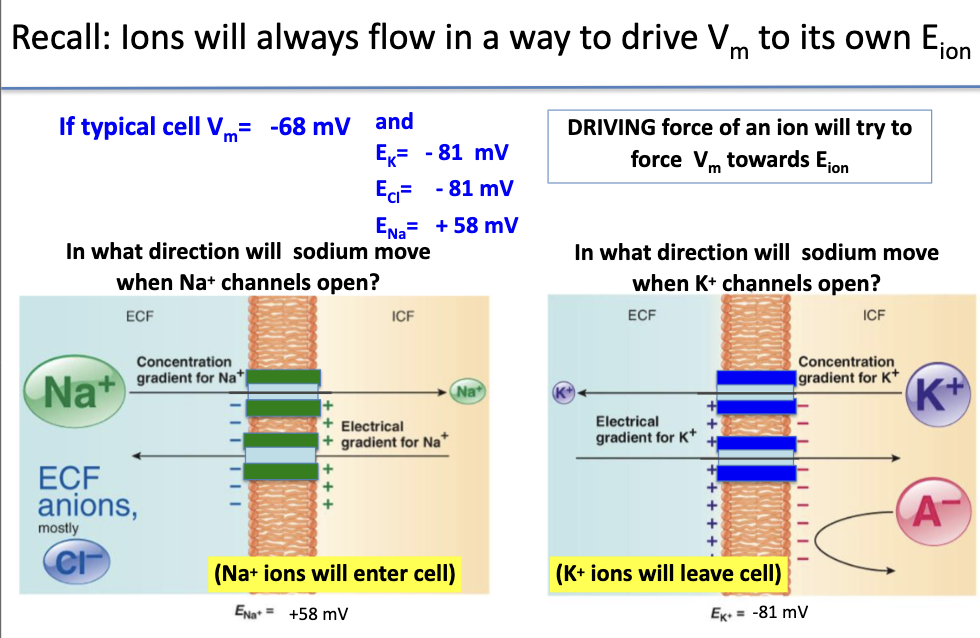
How do you excite a neuron?
Resting Vm = no net ion movement
Unequal ion distribution maintained by pumps/exchangers
Excitation occurs when ion channels open → current flows across membrane → electrical signal
How does electrical activity spread in the cell body?
Neuron receives input at soma (cell body)
Current spreads passively through cytoplasm
This spread is limited → decays with distance
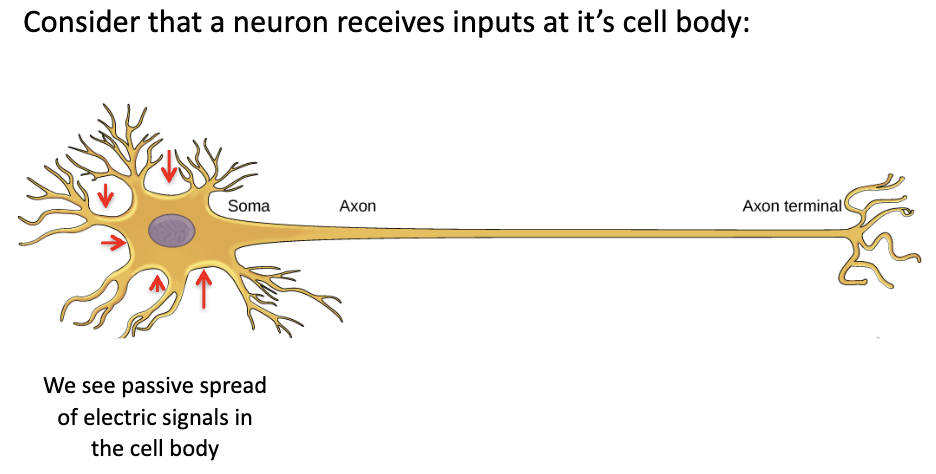
What happens when you inject current into a cell (considering capacitance + resistance)?
Step-by-step:
Two current paths:
iC (to capacitor = membrane charging)
iR (through resistor = channels)
At first: all current charges capacitor → Vm rises slowly
Then: more current flows through resistor (channels) → Vm levels off
When current stops: capacitor discharges → Vm falls slowly
For spherical cells → see exponential rise/fall because capacitors take time to charge/discharge
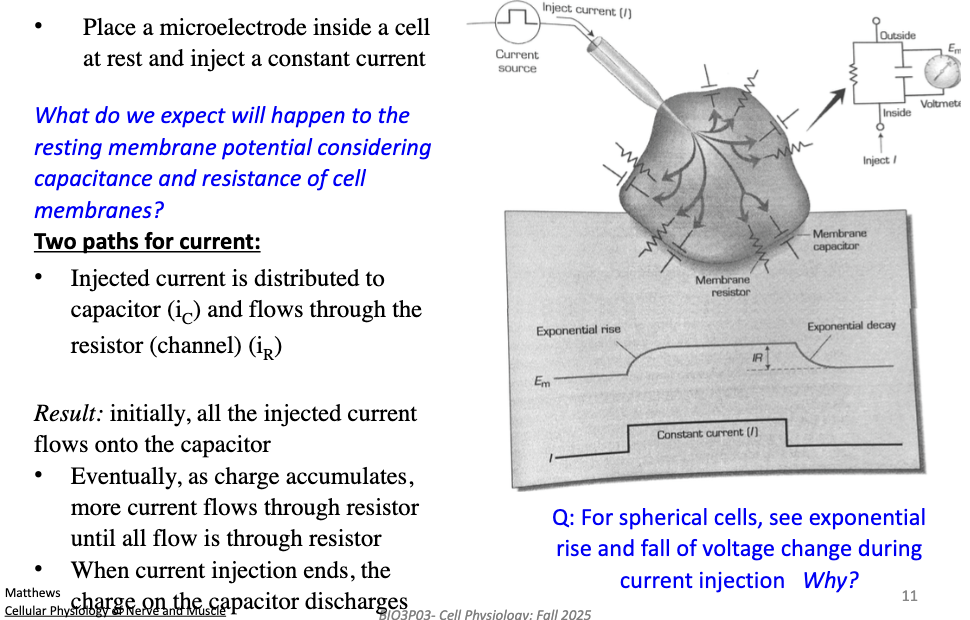
What are graded potentials?
Sum of specific inputs that lead to change in membrane potential
Size depends on:
• Duration (length of stimulus)
• Magnitude (amplitude of stimulus)Signal decays with distance (electrotonic spread)
Not self-renewing
Why are action potentials needed in neurons?
Synaptic input spreads passively → decays with distance
May not be strong enough to reach target cells
If depolarization is large enough at axon hillock → passive → active propagation (AP)
Passive spread occurs because interior of cell has less resistance than rest of the membrane
Axon hillock is densely packed with voltage-gated Na+ channels = “spike initiating zone”
AP ensures reliable, long-distance signal transmission
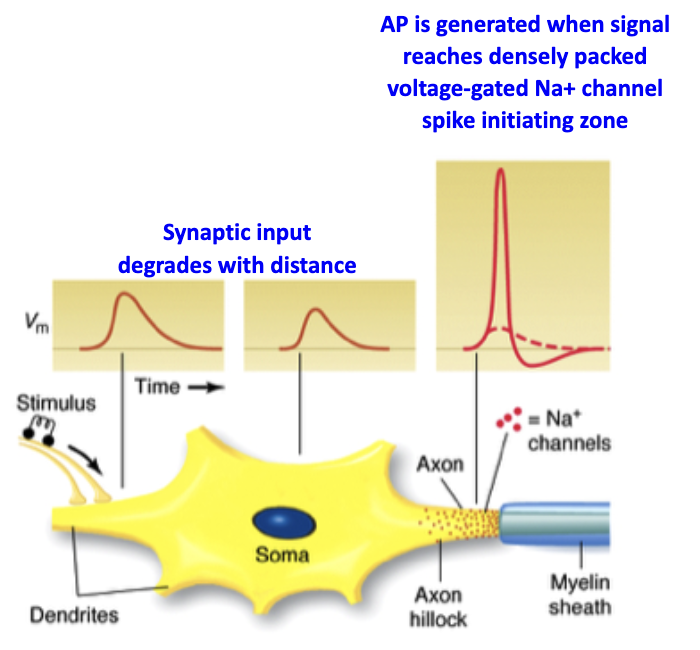
How do neurons integrate synaptic inputs?
Receive excitatory (EPSP) and inhibitory (IPSP) inputs
Postsynaptic potentials sum together = synaptic summation
Net effect determines:
Enough depolarization → action potential
Too much inhibition → no action potential
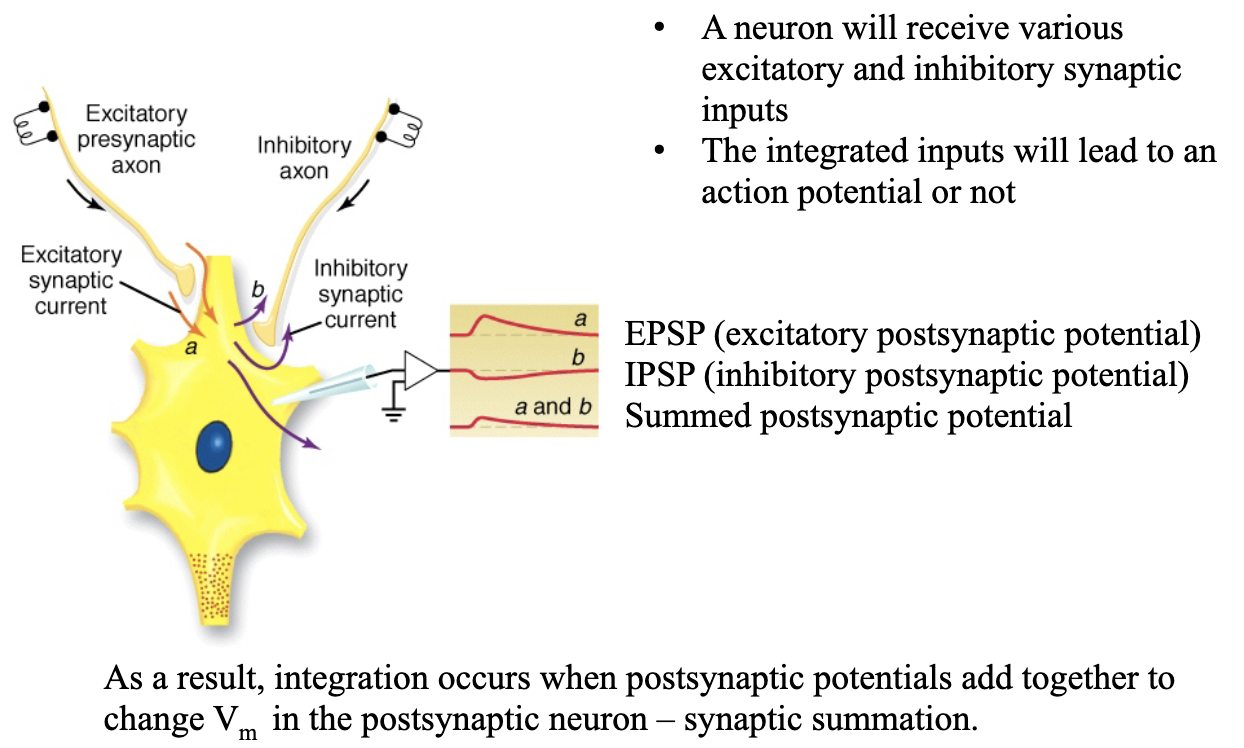
Why is electrotonic decay a problem in axons?
Dendrites act like cables: current splits into membrane (im) + longitudinal (il) components
im → split between membrane capacitance and resistance/conductance
il → flows through resistance of cell interior
Signal decays with distance → weaker farther away
Problem: could lose signal before reaching axon terminal
Solution: neurons generate action potentials at axon hillock to propagate signal reliably
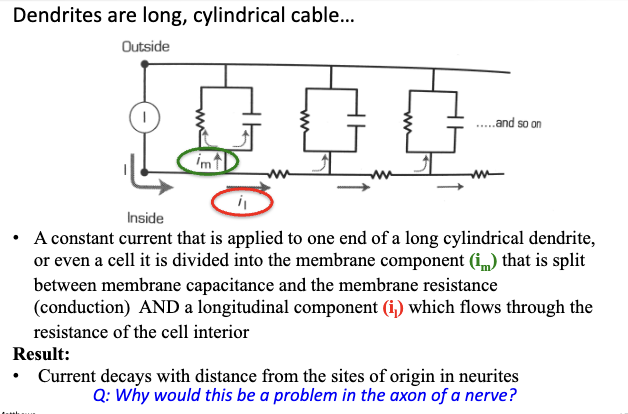
How does a neuron produce an action potential?
Summed depolarization at axon hillock must reach threshold
At threshold stimuli → only local depolarization but no AP
At threshold: full action potential fires (all-or-none response)
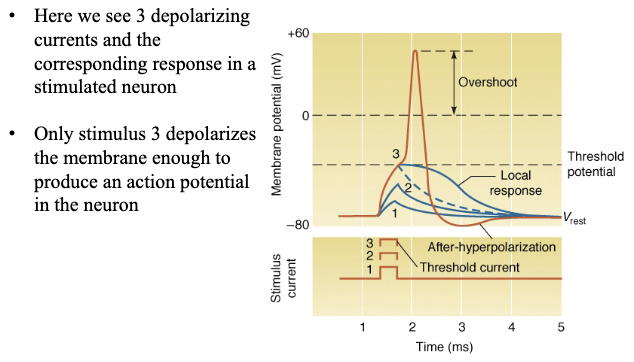
How do signals propagate in the axon?
Soma inputs → passive spread
Axon hillock integrates → AP generated
AP propagates along axon:
More efficient
Reliable
Unidirectional (towards terminal)
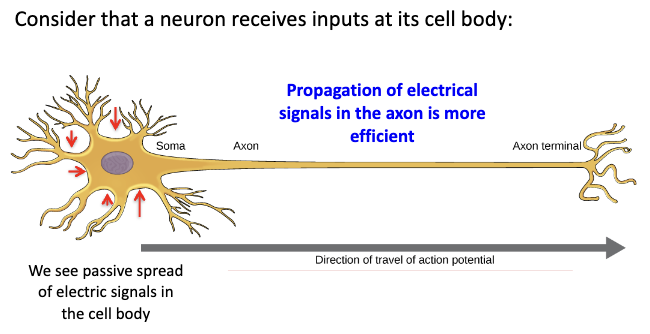
What are the 4 main properties of action potentials?
Threshold for initiation
All-or-none response
Self-regenerative (no decay over distance)
Followed by refractory period (harder to fire again immediately)
How do ionic currents shape the action potential?
Sodium conductance (gNa) rises first → Na⁺ influx → depolarization
Potassium conductance (gK) rises later and longer → K⁺ efflux → repolarization
Shifts in conductance over time create the AP waveform
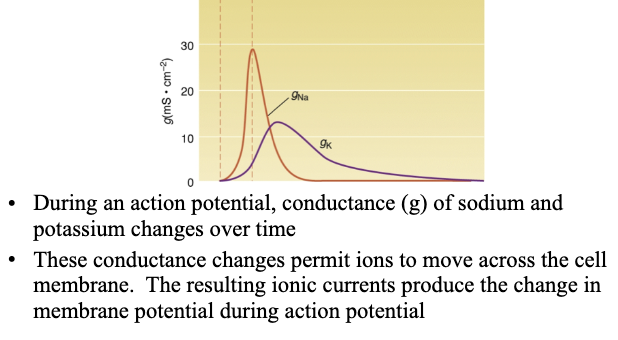
How does information travel from one neuron to another?
Within neuron: graded potentials + action potentials
Between neurons: transmitted via chemical (neurotransmitters) or electrical synapses
